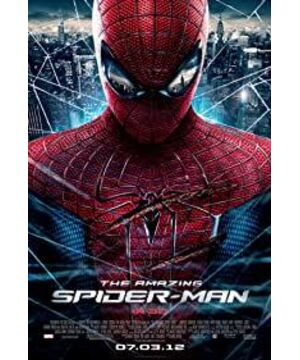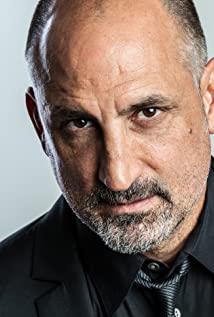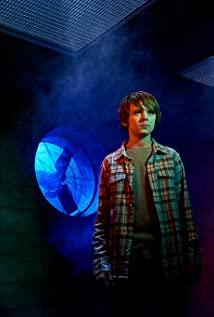To be honest, I really like this movie. I don't want to defend it from aesthetics or connotation. In fact, there is nothing to defend. Just like I also like Will Smith’s "Superman Hancock for All", I think these two movies are good texts to prove that superhero movies are indeed a genre, and their logical structure has become more and more obvious. .
A long time ago, when I read the "Superman" series and the "Spiderman" series completely because of writing articles for a magazine, I noticed that although the two series have different protagonists and different stories, They have exactly the same structure.
In "Superman 1", as an orphan, Superman is adopted by a couple of farmers; the young Superman discovers that he has super powers and abuses his super powers to pick up girls. He is criticized by his adoptive father and pointed out that he should use his power to help others. ; Superman has dual identities, one side is a cowardly kind ordinary person, and the other side is an invincible Superman; the evil villain asks Superman to make a choice, whether to save the innocent people or his girlfriend (the villain fired two each in different directions missile). In "Spider-Man 1", the plot is the same: Spider-Man is adopted by his uncle and aunt as an orphan; Spider-Man abuses his power after possessing superpowers and is educated by his uncle (as a way of strengthening, the uncle uses his life to change his education It has become a powerful moral law and will remain in Spider-Man’s heart forever); Spider-Man has a dual identity; the villain Green Devils also asks Spider-Man to choose to save an innocent child in a school bus or save his girlfriend.
In "Superman 2", Louis sees through the dual identities of Superman, and Superman has to choose between the two identities. Superman finally gave up his superpowers and chose to stay together with Louis. However, the evil villain appeared, and Superman realized his responsibility again, so he restored his super power and erased Louis' memory. In "Spider-Man 2", Spider-Man was also tortured by dual identities, and eventually gave up his superpowers for Mary Jane. But he also realized his responsibility again, so he rejected Mary Jane again and regained his superpowers.
In "Superman 3", due to the influence of radioactive materials, Superman began to indulge his desires. He wanted to destroy and became an accomplice of the villain. In the end, Superman split into two people, one is Clark in a suit and leather shoes, and the other is an evil superman who is untamed. The two fought a battle, and Clark finally defeated Superman. The same is true in "Spider-Man 3". Spider-Man is parasitized by alien creatures. He becomes selfish and violent, and tries to kill Sandman for revenge. Also in a symbolic church, Spider-Man used the church bell to drive away alien creatures.
In this process, a group of confrontational items appeared repeatedly: orphans (individuals) and families, desires and responsibilities, superheroes and ordinary people, girlfriends and the public, indulgence and civilization.
If it is further abstracted, all opposing items can be summarized into a set of opposing items: an individualistic choice and a collectivist choice.
This pair of contradictions is integrated into the superhero, making him a middle term for reconciling the pair of contradictions.
According to Levi Strauss’s investigation of South American mythology, he believes that “mythological thinking always starts from being aware of certain oppositions, and then develops to gradually reconciling these oppositions” (Structural Anthropology 1 No. 11 Chapter "The Structure of Mythology" page 206).
How to reconcile it? Carry out a metaphorical transformation, from a pair of unreconcilable binary opposite structures to a set of triplet structures that can contain an intermediate term. For example, if the contradiction between "life and death" is to be reconciled, then "life" should be transformed into "agriculture" and "death" into "war". Then an intermediate transition item can be accommodated between agriculture and war. "Hunting".
If we admit that Hollywood westerns are a genre, they reflect certain western myths, and think that the cowboys themselves reconcile the opposition between the wild and the small town, freedom and order, and the savage and civilization. Then, we have no reason to oppose, superhero movies also have this distinct type structure.
Moreover, by using this structure to check other superhero movies in reverse, this opposite structure can be clearly abstracted from any plot. For example, the "Batman" series, the "Blade Warrior" series, the "X-Men" series and the "Hellboy" series.
Especially the latter three, they are different from "Superman", "Spiderman" and "Batman". The superheroes in the film do not have a double identity as a kind of reconciliation and disguise, so the superheroes in the story have to bear a kind of The direct conflict of contradiction between individualist choice and collectivist choice.
In the form of a story, the superhero in the film is rejected by the evil camp and the general public at the same time, but the superhero is both.
The Blade Warriors are half human and half vampires, the X-Men themselves are mutants, and the Hellboy is the son of a demon from hell. Their opponents are all their own anti-popular side (evil vampires, evil mutants, evil demons).
The dualistic structure and superheroes as an intermediate transition item to reconcile the contradictions are particularly obvious here.
And the reason why I like "Hancock, Superman for All" is nothing more than that this movie uses a conscious and joking approach to highlight these structures and ridicule them. For example, it is mentioned in the story that a superhero must be lonely (orphan), because once they find a female partner, their superpowers will disappear; or, a superhero who is not self-disciplined when he wears a tight-fitting uniform Later, he slowly learned to stop indulging himself.
This feeling makes me very comfortable, because it proves that my point of view is correct, so I will like this movie.
And this "The Amazing Spider-Man" proves my point of view on another level.
Levi Strauss mentioned that "the purpose of mythology is to provide a logical model to resolve a certain contradiction", but "if this contradiction is real, then this task cannot be accomplished" (p. 211) .
Therefore, in order to continuously achieve the function of regulating contradictions, "the myth will develop in a spiral manner until the intellectual impulse that spawned it is exhausted" (p. 211).
This development is that "one of the two extreme terms and that intermediate term are replaced by a new triplet" (p. 206).
The simple explanation is that as an intermediate term that reconciles contradictions, it can no longer convincingly ease this set of oppositional relations. Therefore, the intermediate term and any one of the two extreme terms it reconciles forms a new pair of oppositions. Relationship, and a new middle term arises from it.
Still take life and death as an example. Life and death are the initial opposites. They are transformed into a triad of "agriculture, hunting, war", where hunting is the middle term between agriculture and war. When hunting cannot continue to reconcile the contradictions between the two, hunting and agriculture form a new set of oppositions, which are transformed into the second set of triads: "herbivores, carnivores, and predators". Among them, herbivores are metaphors for agriculture, predators are metaphors for hunting, and carnivorous animals are the new middle term between the two.
There is no doubt that Western films have gone through such a process of transformation. If we say that the western cowboys in "Flying Guanshan", "The Searcher", and "The Wilderness" are all in criminals and civilized people, Indians and whites, cowboys and farmers, guns and hoes, wild (or distant mountains). ) To reconcile with the town. Then, "Noon" is a new set of opposing structures between the heroes of the west and the public, and the sheriff's wife has become a new middle term to reconcile the contradictions between the two. "Slaying the Dragon" is a new set of confrontations between the heroes of the West and the barbaric criminals. A female gambler with a criminal record (she finally fell in love with the sheriff) has become a new middle of this set of contradictions. item.
Superhero movies also have such a transformation. The movie that initiated this transformation is Nolan's "Dark Knight", and Zach Schneider's "Watchmen" continues this transformation. In these films, the three of the public, superheroes and super villains form an unusually complex triad structure.
Originally, superheroes only needed to reconcile the contradiction between the public (a kind of collectivist choice) and super villains (a kind of individualistic choice). But in these films, superheroes must form a new set of opposing structures with the public, and superheroes must form a new set of opposing structures with super villains.
The double-faced man symbolizes the product of a reconciliation failure between the public and the clown. Batman conceals this failure by completely antagonizing himself and the public to form a new opposition.
The "Watchmen" tells the same story in a completely opposite way to "The Dark Knight". The core prophecy of "Watchmen" is actually that, in order to alleviate the contradiction between himself and the public, the superhero creates a "super villain" to form an opposition with the public, so as to ease the relationship between himself and the public.
In short, whether it is "Dark Knight" or "Watchmen", the contradictory relationship between superheroes and the public has become a new set of contradictions.
And this change is clearly reflected in "The Amazing Spider-Man."
In this new work, the original version of Spider-Man’s pain for his dual identity is eliminated to the greatest extent, and the choice between being a hero and as a person no longer exists (at least it is downplayed, and finally Spider-Man said lightly: "If you want to break the contract, you have to break the contract." It resolves the contradiction between the old version of Spider-Man and the old version of Superman that has not been resolved in a lifetime)
In the new work, it is the relationship between the superhero and the public that is repeatedly exaggerated.
The first group of triplets are: police (father), girlfriend (daughter), Spiderman (boyfriend).
The contradiction between Spider-Man and the police does not exist in the old version of Spider-Man. The only reflection of the old version of Spider-Man is the opposition between Spider-Man and the public. It is just that the newspaper boss uses the newspaper to criticize Spider-Man without pain.
But in the new version, the conflict between Spider-Man and the police has become the strongest pair of conflicts in the narrative outside of the contradiction between Spider-Man and the Lizard Demon. So before Spider-Man fights the Lizard Demon, he has to start a battle with the police.
The best expression of this group of opposition is a line of the sheriff: He wears a mask, and I wear a police badge. And this contradiction was finally resolved by the fact that Spider-Man's girlfriend is also the sheriff's daughter, as a middle term.
The second group of triplets is to beautify the first group of triplets: construction worker (father), child (son), Spiderman.
In this group of triplets, the relationship between Spider-Man and the public is full of moving. Spider-Man first saved the son of the construction worker (at the same time, it is worth pointing out that Spider-Man first took off the mask to gain the trust of the child, and then made the child courage by letting the child wear the mask).
Then, when Spider-Man was injured in his leg by the police representing the public law, the construction workers who also represented the public used their big cranes to form a bridge in the sky to protect Spider-Man all the way to his destination.
So we found that the second group of triplets was completely used to repair the first group of triplets and perform their own functions.
A lot of similar analysis can be done. For example, the original version of Spider-Man’s spinning ability is a personal superpower, while the new version’s spinning ability is derived from a popular technological power; the original version of Spider-Man is an ordinary person who acquired superpowers by chance, and the new version Spider-Man’s father himself is the inventor of this genetic technology, which makes it inevitable for Spider-Man to acquire superpowers.
Therefore, I am very welcome and interested in the new version of Spider-Man, and look forward to its second release. If the second new version of Spider-Man continues to confirm the correctness of my point of view, then we have reason to say that superhero movies are the most vigorous and structured new genre after Hollywood Westerns.
View more about The Amazing Spider-Man reviews











